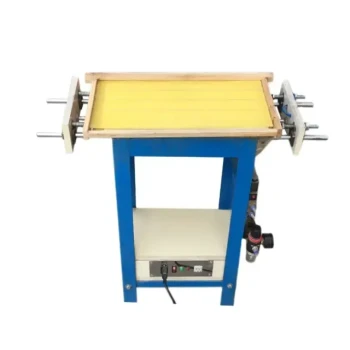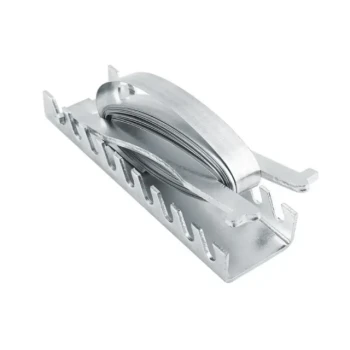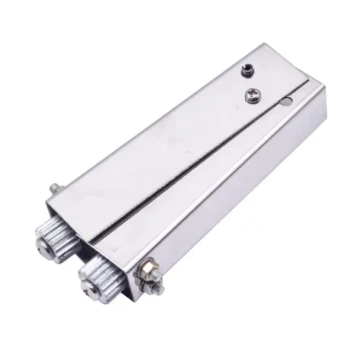At its core, Varroa mite thresholds are not static numbers but dynamic guidelines that change based on your climate's effect on the honey bee brood cycle. Regions with long or continuous brood-rearing seasons, like the southern United States, must maintain lower mite thresholds (e.g., 1-2%) year-round. In contrast, colder regions with a distinct winter break in the brood cycle can tolerate slightly higher thresholds (e.g., 2-3%) in the spring, but must become extremely strict as fall approaches.
The central takeaway is that your Varroa threshold is not a target to hit, but a warning light. It's a measure of the mite population's growth rate relative to your bee population. A lower threshold is required whenever mite reproduction outpaces the growth of the bee colony, a situation that occurs much faster in warmer climates.

The Core Principle: Mite Population Dynamics
To effectively use thresholds, you must first understand the enemy. A Varroa mite's lifecycle is inextricably linked to the honey bee brood cycle, and this relationship is the engine of a hive's collapse.
Varroa Reproduction is Tied to Brood
Varroa mites are parasites that can only reproduce within a capped honey bee brood cell. A female mite enters a cell just before it is capped, lays her eggs, and they mature and mate inside the protected cell.
When the new bee emerges, the original mother mite and her newly-mated daughters emerge with it, ready to parasitize other bees and repeat the cycle.
The Concept of "Mite Doubling Time"
In the presence of bee brood, a Varroa mite population can double approximately every month. This exponential growth is the ticking clock that every beekeeper is up against.
A seemingly small mite problem in May can become a catastrophic, irreversible infestation by September if left unchecked.
How Mite Loads Become Fatal
The danger is not just the absolute number of mites, but the ratio of mites to bees. In spring, the bee population explodes, which can mask a growing mite problem.
However, as the bee population naturally peaks in mid-summer and begins to decline for winter, the mite population is still growing exponentially. This is the critical crossover point where the mite-to-bee ratio skyrockets, overwhelming the colony and spreading viruses that cripple the vital winter bees.
How Climate Dictates Your Threshold
Your geographic location and its climate are the most significant factors in determining your baseline Varroa management strategy.
Colder Climates (Shorter Brood Season)
In regions with cold winters, the queen naturally stops laying for a period. This creates a natural brood break, which is a powerful tool for Varroa management.
Without brood, the mites cannot reproduce. This pause naturally halts the mites' exponential growth. Because of this, hives in colder climates can often tolerate a slightly higher mite level in the spring (e.g., 2-3% or 6-9 mites in a 300-bee sample), as there is a shorter overall season for the mite population to explode.
Warmer Climates (Longer Brood Season)
In subtropical or tropical climates, queens may lay brood year-round. This means the Varroa mite population never stops reproducing.
There is no "reset" button. The mite population grows relentlessly, month after month. For this reason, beekeepers in these regions must be far more vigilant, maintaining very low thresholds (e.g., 1-2% or 3-6 mites in a 300-bee sample) at all times to prevent the population from ever gaining momentum.
Seasonal Thresholds: A Timeline for Action
Beyond your climate's baseline, your acceptable mite threshold must shrink as the beekeeping season progresses.
Spring Buildup (e.g., April-June)
During this phase, the bee population is growing rapidly. A threshold of 2-3% is a common alert level. The goal here is to assess the mite load coming out of winter and intervene if necessary to prevent them from building up too early.
Mid-Summer (e.g., July-August)
This is the most critical period. The hive's bee population has peaked, but the mite population is hitting its maximum growth rate. Mites are now infecting the brood that will become your winter bees. The threshold here must be stricter: 1-2% is the absolute maximum. Many experts advise treating at any level above 1% at this time.
Fall Preparation (e.g., September-October)
The goal now is purely about ensuring the survival of your winter bees. These bees must live for months, and any damage from mites or the viruses they transmit is a death sentence for the colony. The threshold must be as close to zero as possible. Treat aggressively if you find mites exceeding a 1% infestation level.
Understanding the Trade-offs
Choosing a threshold is a risk management decision. There is no single "correct" number, only a calculation of risk versus cost.
The Danger of a "High" Threshold
The risk of tolerating a higher mite load is simple: colony death. By the time you see visible signs of infestation (like deformed wing virus), the damage is already done. Your winter bees are compromised, and even if a treatment kills the mites, the colony is unlikely to survive the winter.
The Cost of a "Low" Threshold
The cost of maintaining a very low threshold is primarily in labor and resources. It requires more frequent monitoring (alcohol washes or sugar shakes) and potentially more frequent treatments. This costs time, money, and can add stress to the colony.
Why Percentage is a Better Metric
Always measure infestation as a percentage (mites per 100 bees) rather than a raw mite count from a sticky board. A 3% infestation rate is a standardized measure of pressure on a colony, whether it contains 60,000 bees or 20,000. A sticky board count of 500 mites, however, means something very different for a large colony versus a small one.
Making the Right Choice for Your Colony
Your Varroa management strategy must be tailored to your specific location and goals. Use these principles as your guide.
- If your primary focus is managing bees in a cold climate: Your most critical task is ensuring mite levels are near zero before October, protecting the bees that will carry the colony through winter.
- If your primary focus is managing bees in a warm climate: Your strategy must be built on year-round vigilance and maintaining a consistently low mite load, as you have no natural break in their reproductive cycle.
- If your primary focus is learning as a new beekeeper: Err on the side of caution. Adopt a low threshold (1-2%), test your hives monthly during the season, and treat proactively. It is better to treat an unnecessary time or two than to lose your bees.
Proactive, data-driven Varroa management is the single most important skill for ensuring the long-term health and survival of your honey bees.
Summary Table:
| Region/Season | Recommended Threshold | Key Rationale |
|---|---|---|
| Warm Climates (Year-Round) | 1-2% | No natural brood break; mites reproduce continuously. |
| Cold Climates (Spring) | 2-3% | Shorter brood season allows for slightly higher tolerance. |
| Fall (All Regions) | <1% | Critical period to protect winter bees from virus transmission. |
Protect Your Apiary with Precision Varroa Management Supplies from HONESTBEE
As a commercial apiary or beekeeping equipment distributor, maintaining colony health is your top priority. HONESTBEE provides the reliable, wholesale-focused beekeeping supplies and equipment you need to implement effective, data-driven Varroa control strategies—no matter your region or season.
Let us help you safeguard your investment and ensure the vitality of your bees. Contact our expert team today to discuss your specific needs and explore our product solutions.
Visual Guide

Related Products
- Adjustable Formic and Acetic Acid Dispenser for Bee Mite Treatment
- Professional Bamboo Queen Isolation Cage
- Black Plastic Beetle Barn Hive Beetle Trap for Beehives
- Australian Pine Wood Langstroth Screen Bottom Board for Wholesale
- Professional Pneumatic Wire Embedder for Beehive Frames
People Also Ask
- How can beekeepers ensure their hives survive the winter? A Guide to Colony Survival
- What should beekeepers do to manage varroa mites effectively? Adopt a Proactive Monitoring Strategy
- What are the symptoms of Varroa Mite Syndrome (VMS)? Recognizing the Signs of Colony Collapse
- What is the focus of hive management during summer? Maximize Your Honey Harvest with Expert Tips
- What does Chewed Down Brood (CDB) indicate in bee colonies? A Sign of Varroa Mite Infestation



















